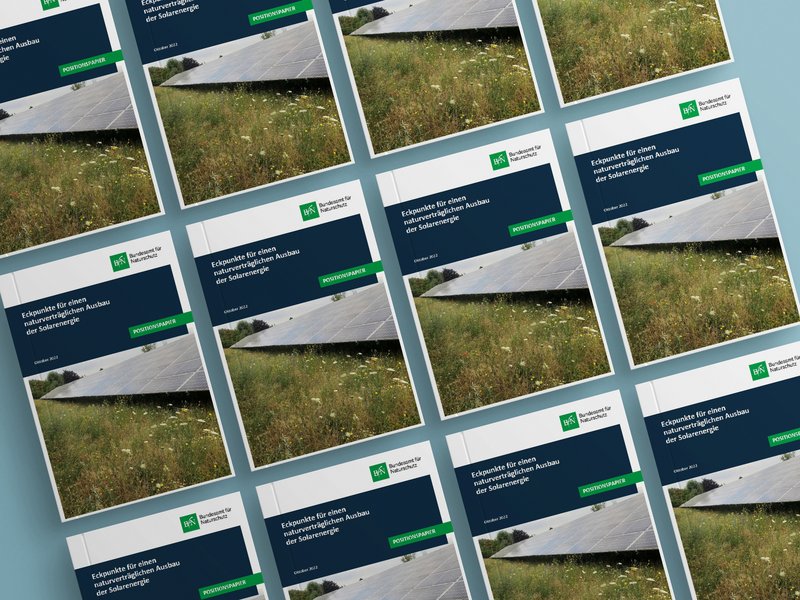In order to achieve Germany's targets for reducing CO2 emissions in line with the 1.5 degree target and to adjust climate, energy and economic policies accordingly, the Bundestag has passed a massive expansion of renewable energies with the Renewable Energy Sources Act 2023 (EEG 2023). In 2030, at least 80% of the electricity consumed is to come from renewable energies (§ 1 paragraph 2 EEG 2023). The focus of the expansion is on wind and solar energy. Accordingly, according to § 4 No. 3 EEG 2023, an increase in the installed capacity of solar plants to 215 gigawatts (GW) in 2030 and 400 GW in 2040 is planned.
By the end of 2021, approx. 59 GW of photovoltaic (PV) capacity had been installed nationwide (cf. PV-Magazin, online 2022), with approx. 70 % of the capacity being installed on already sealed surfaces (e.g. roofs) (cf. Wirth et al. 2021: 14). According to the EEG 2023, "the expansion will be divided equally between roof and open spaces" (EEG-Referentenententwurf 2022: 161). Accordingly, the use of previously unsealed and undeveloped areas in the open countryside will increase in the future.
With the planned promotion of agri-PV, so-called moorland PV and floating PV, as well as the expansion of the area for conventional ground-mounted systems, significantly more unsealed and undeveloped areas in the open countryside will be technically overgrown and taken up in the future. Depending on the location and design, the construction of solar energy plants will have various effects on species, habitats, natural assets, especially soil functions, and the landscape (e.g. barrier effect for migratory species, changes to the landscape).
At the same time, there are European and international obligations to promote, protect and conserve biodiversity (e.g. Convention on Biological Diversity, EU Biodiversity Strategy 2030, UN Sustainable Development Goals) and corresponding national targets to prevent the increased decline of species (e.g. insects, birds of the open countryside) and habitats.
Accordingly, nature conservation and landscape-related requirements must be taken into account in the implementation of energy policy goals in order to ensure an expansion of solar energy that is compatible with nature. The Federal Agency for Nature Conservation (BfN) wants to play an active role and make initial recommendations in this regard. The position paper refers to both photovoltaic and solar thermal systems, as the key points can be applied to both types of system.
Bundesamt für Naturschutz (Hrsg.) (2022): Eckpunkte für einen naturverträglichen Ausbau der Solarenergie. Positionspapier. Bonn

